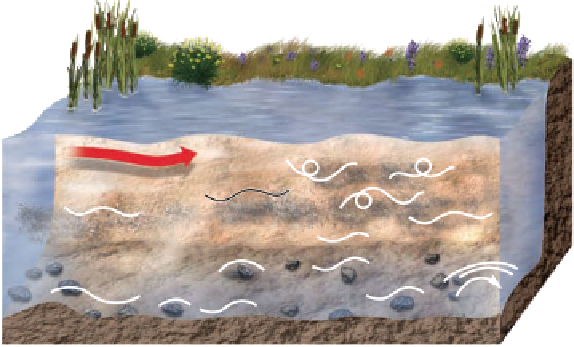Geology Reference
In-Depth Information
◗
Figure 12.7
Abrasion by Running Water Carrying Sand and Gravel
These potholes in the bed of the Chippewa River in Ontario,
Canada, are about 1 m across. Two potholes have merged to form
a larger composite pothole.
b
The rocks just above water level have been smoothed and
polished by abrasion.
a
These stones from a pothole measure 7-9 cm across. They are
spherical and smooth because of abrasion.
c
Some of the sediment now being deposited in the
Gulf of Mexico by the Mississippi River came from
sources as distant as Pennsylvania, Minnesota, and
Alberta, Canada. Transport might be lengthy, but
deposition eventually takes place. Some deposits
accumulate along the way in channels, on adjacent
floodplains, or where rivers and streams discharge
from mountains onto nearby lowlands or where they
fl ow into lakes or seas.
Rivers and streams constantly erode, transport,
and deposit sediment, but they do most of their
geologic work when they flood. Consequently, their
deposits, collectively called
alluvium,
do not rep-
resent the day-to-day activities of running water,
but rather the periodic sedimentation that takes
place during floods. Recall from Chapter 6 that
sediments accumulate in
depositional environments
Stream current
Suspended load
Solution load
(dissolved)
Bed load
Saltation
Rolling grain
Traction
◗
Figure 12.8
Sediment Transport Sediment transport as bed load,
suspended load, and dissolved load. Flow velocity is highest near the
surface, but gravel- and sand-sized particles are too large to be lifted far
from the streambed so they make up the bed load, whereas silt and clay
are in the suspended load.
















Search WWH ::

Custom Search